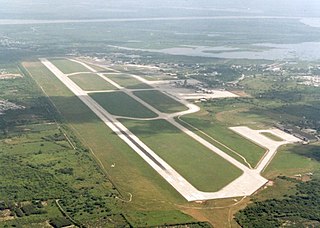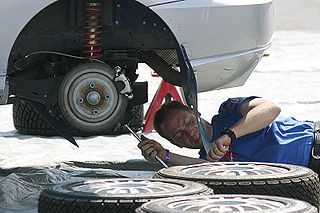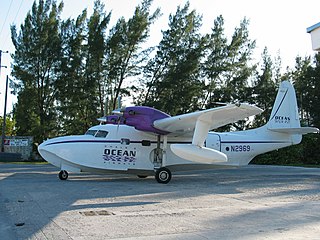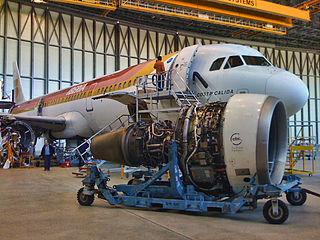
The technical meaning of maintenance involves functional checks, servicing, repairing or replacing of necessary devices, equipment, machinery, building infrastructure, and supporting utilities in industrial, business, and residential installations. Over time, this has come to include multiple wordings that describe various cost-effective practices to keep equipment operational; these activities occur either before or after a failure.

Air Canada Flight 143, commonly known as the Gimli Glider, was a Canadian scheduled domestic passenger flight between Montreal and Edmonton that ran out of fuel on July 23, 1983, at an altitude of 41,000 feet (12,500 m), midway through the flight. The flight crew successfully glided the Boeing 767 to an emergency landing that resulted in no serious injuries to passengers or persons on the ground, at a former Royal Canadian Air Force base in Gimli, Manitoba, that had been converted to a motor racing track. This unusual aviation incident earned the aircraft the nickname "Gimli Glider". The accident is commonly blamed on mistaking pounds for kilograms, which resulted in the aircraft carrying only 45% of its required fuel load. However, the units error was the last in a series of failures that aligned in a Swiss cheese model to cause the accident.

Ernesto Cortissoz International Airport is an airport serving the area of Barranquilla, the capital city of the Atlántico department in Colombia. The airport is located in the suburban municipality of Soledad (Soledad International Airport). It owes its name to one of the pioneers of Colombian aviation, Ernesto Cortissoz.

Stockholm Arlanda Airport is an international airport located in the Sigtuna Municipality of Sweden, near the town of Märsta, 37 kilometres (23 mi) north of Stockholm and nearly 40 kilometres (25 mi) south-east of Uppsala. The airport is located within Stockholm County and the province of Uppland. It is the largest airport in Sweden and the third-largest airport in the Nordic countries. The airport is the major gateway to international air travel for large parts of Sweden. Arlanda Airport was used by close to 27 million passengers in 2017, with 21.2 million international passengers and 5.5 million domestic.
Bahamasair Holdings Limited is an airline headquartered in Nassau. It is the national airline of The Bahamas and operates scheduled services to 32 domestic and regional destinations in the Caribbean and the United States from its base at Lynden Pindling International Airport (NAS).

In motorsports, a pit stop is a pause for refuelling, new tyres, repairs, mechanical adjustments, a driver change, as a penalty, or any combination of the above. These stops occur in an area called the pits, most commonly accessed via a pit lane which runs parallel to the start/finish straightaway of the track and is connected to it at each end. Along this lane is a row of garages outside which the work is done in a pit box. Pit stop work is carried out by the pit crew of up to twenty mechanics, depending on the series regulations, while the driver often waits in the vehicle.

In aviation and aerospace, foreign object damage (FOD), is any particle or substance, alien to an aircraft or system, which could potentially cause damage.
Reliability engineering is a sub-discipline of systems engineering that emphasizes the ability of equipment to function without failure. Reliability describes the ability of a system or component to function under stated conditions for a specified period of time. Reliability is closely related to availability, which is typically described as the ability of a component or system to function at a specified moment or interval of time.

Flight planning is the process of producing a flight plan to describe a proposed aircraft flight. It involves two safety-critical aspects: fuel calculation, to ensure that the aircraft can safely reach the destination, and compliance with air traffic control requirements, to minimise the risk of midair collision. In addition, flight planners normally wish to minimise flight cost through the appropriate choice of route, height, and speed, and by loading the minimum necessary fuel on board. Air Traffic Services (ATS) use the completed flight plan for separation of aircraft in air traffic management services, including tracking and finding lost aircraft, during search and rescue (SAR) missions.

An auto mechanic is a mechanic with a variety of automobile makes or either in a specific area or in a specific make of automobile. In repairing cars, their main role is to diagnose the problem accurately and quickly. They often have to quote prices for their customers before commencing work or after partial disassembly for inspection. Their job may involve the repair of a specific part or the replacement of one or more parts as assemblies.

Chalk's Ocean Airways Flight 101 was an aircraft crash that occurred off Miami Beach, Florida, in the United States on December 19, 2005. All 18 passengers and the 2 crew members on board the 1947 Grumman G-73T Turbine Mallard died in the crash, which was attributed to metal fatigue on the starboard wing resulting in separation of the wing from the fuselage.

Aircraft maintenance is the performance of tasks required to ensure the continuing airworthiness of an aircraft or aircraft part, including overhaul, inspection, replacement, defect rectification, and the embodiment of modifications, compliance with airworthiness directives and repair.

Adam Air Flight 172 refers to an accident suffered by a Boeing 737-300, when it landed in Surabaya at the end of a scheduled domestic passenger flight from Soekarno–Hatta International Airport to Juanda Airport. On 21 February 2007, the plane bent on landing, with the fuselage cracking in the middle of the passenger section. All six of Adam Air's remaining 737s were immediately grounded, and five of them were back in regular service later that year. This incident caused further concerns regarding the safety of flights operated by Adam Air, which had received much criticism after the 1 January 2007 crash of Flight 574.

The 2007 TransAVIAexport Airlines Il-76 crash refers to an Ilyushin Il-76 cargo aircraft operated by that Belarusian airline that crashed in the outskirts of Mogadishu, Somalia, on 23 March 2007, during the Battle of Mogadishu. The plane was carrying repair equipment and humanitarian aid. According to a spokesperson for the transport ministry of Belarus, the aircraft was shot down. However, the Somali government insisted that the crash was accidental. A crew of eleven on board the aircraft perished in the accident.

Conservation and restoration of road vehicles is the process of restoring a vehicle back to its original working condition, whether the car is partially scrapped or completely totaled. Automotive restoration can be applied to many different eras of the automobile. Bus preservation groups aim to purchase buses of various eras to restore them to their original operating condition. Buses are often restored to the original authentic livery of their original owner.
British Airways Engineering is the aircraft maintenance subsidiary of British Airways which provides support services to British Airways and other airlines. It is responsible for the entire BA Boeing 747-400 fleet maintenance, cabin interior conversions and general ramp maintenance work for both their own fleet and other airlines. It also sends some of its own heavy maintenance work out to other companies, although the vast majority of aircraft and cabin interior work is still carried out by BA Engineering itself.

LOT Polish Airlines Flight 007 was an Ilyushin Il-62 that crashed near Okęcie Airport in Warsaw, Poland, on 14 March 1980, as the crew aborted a landing and attempted to go-around. All 87 crew and passengers died. It was caused by the disintegration of one of the turbine discs in one of the plane's engines, leading to uncontained engine failure. The turbine disc was later found to have manufacturing faults.
In public transportation, schedule adherence or on-time performance (OTP) refers to the level of success of the service remaining on the published schedule. On time performance, sometimes referred to as on time running, is normally expressed as a percentage, with a higher percentage meaning more vehicles are on time. The level of on time performance for many transport systems is a very important measure of the effectiveness of the system.
Crew scheduling is the process of assigning crews to operate transportation systems, such as rail lines or airlines.
Integrated vehicle health management (IVHM) or integrated system health management (ISHM) is the unified capability of systems to assess the current or future state of the member system health and integrate that picture of system health within a framework of available resources and operational demand.













